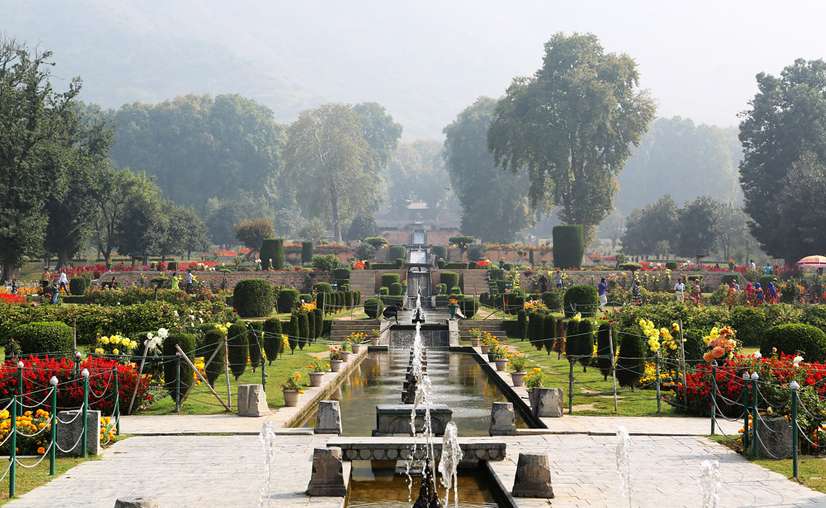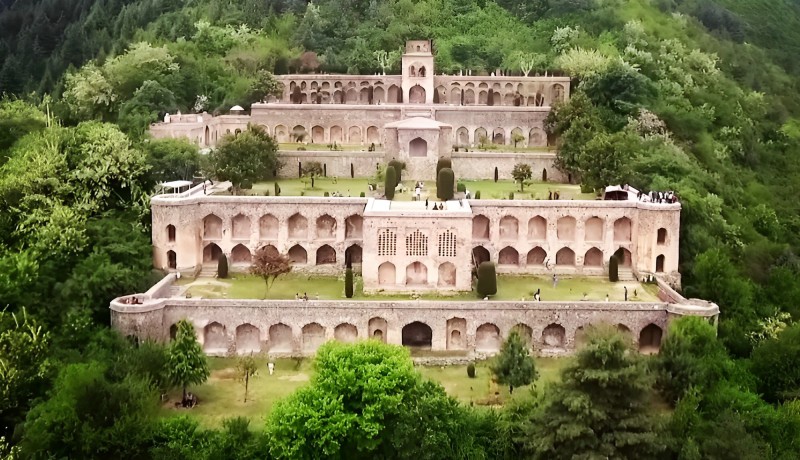Introduction
Srinagar, the summer capital of Jammu and Kashmir, is known for its breathtaking beauty, and among its most cherished treasures are the Mughal Gardens. These gardens, with their meticulously designed landscapes, flowing water channels, and blooming flowers, represent the zenith of Mughal architecture and artistry. To truly appreciate their splendour, timing your visit right is essential. This guide will walk you through everything you need to know about the best time to visit the Mughal Garden Srinagar, including timings and helpful tips to make your visit unforgettable.
History and Significance of Mughal Garden, Srinagar
The Mughal Gardens of Srinagar are a living testimony to the grandeur of Mughal architecture. Built during the reign of the Mughal emperors, these gardens were designed as a retreat from the sweltering heat of the plains. Each garden in Srinagar reflects the Persian concept of paradise—lush greenery, sparkling water bodies, and symmetrical layouts, all contributing to an atmosphere of peace and tranquility.
The Mughals, particularly Emperor Jahangir, were enamoured by the natural beauty of Kashmir. He famously said, “If there is a paradise on earth, it is this, it is this, it is this.” These gardens were his way of creating that paradise on earth, offering a perfect blend of natural and man-made beauty.
Types of Mughal Gardens in Srinagar
Srinagar is home to several Mughal gardens, each with its unique charm and historical significance:
Shalimar Bagh

The largest of the Mughal gardens, Shalimar Bagh, was built by Emperor Jahangir in 1619 for his wife, Nur Jahan. This garden is known for its elaborate fountains, terraced lawns, and an enchanting pavilion in the centre.
Nishat Bagh

Nishat Bagh, also known as the ‘Garden of Joy,’ is the second largest Mughal Garden in the Kashmir Valley. Built by Asif Khan, the brother of Nur Jahan, in 1633, it offers a stunning view of Dal Lake and the surrounding mountains.
Chashme Shahi

Chashme Shahi, or the Royal Spring, is the smallest of the three Mughal gardens in Srinagar. Built in 1632 by Ali Mardan Khan, it is famous for its natural spring, which is believed to have medicinal properties.
Pari Mahal

Pari Mahal, or the ‘Palace of Fairies,’ is a seven-terraced garden located on the Zabarwan mountain range. Originally a Buddhist monastery, it was converted into a garden by Dara Shikoh, the eldest son of Shah Jahan.
Best Time to Visit Mughal Garden, Srinagar
Seasonal Overview
The beauty of the Mughal Gardens changes with the seasons, each offering a different but equally enchanting experience.
Spring (March to May)
Spring is perhaps the most popular time to visit Srinagar’s Mughal Gardens. The gardens are in full bloom, with tulips, daffodils, and other flowers creating a riot of colors. The weather is mild, making it ideal for a leisurely stroll through the gardens.
Summer (June to August)
Summer is also a good time to visit, especially if you prefer warmer weather. The gardens are lush and green, and the fountains are in full flow, providing a refreshing escape from the heat.
Autumn (September to November)
Autumn in Srinagar is magical. The leaves turn shades of red, orange, and yellow, creating a picturesque landscape. This season is less crowded, offering a more peaceful experience.
Winter (December to February)
Winter is the least popular time to visit the gardens as they are often covered in snow. However, if you enjoy the solitude and the stark beauty of winter, this could be a unique time to visit.
Ideal Months for Visiting
For those looking to experience the gardens at their best, March and April are ideal months, coinciding with the famous Tulip Festival. October and November are also excellent choices, especially for those who wish to see the autumn foliage.
Time of Day Considerations
The time of day you choose to visit can also impact your experience.
Morning Visits
Morning visits are recommended for those who prefer fewer crowds and softer light, which is perfect for photography.
Afternoon Visits
Afternoons can be warmer, especially in the summer, but they are great for exploring at a leisurely pace.
Evening Visits
Evenings are ideal for those who want to enjoy the gardens in cooler temperatures and witness the golden hues of the setting sun.
Mughal Garden Timings
Most Mughal gardens in Srinagar open early in the morning and close by evening, around sunset. The general timings are from 9:00 AM to 7:00 PM, though these can vary slightly depending on the season. During festivals or special events, such as the Tulip Festival, the gardens may open earlier or close later.
Entry to the gardens typically requires a nominal fee, which helps in maintaining these historic sites. Make sure to check for any updates on timings or fees before your visit, as they can change.
Tips for Visiting Mughal Garden, Srinagar
What to Wear
The weather in Srinagar can be unpredictable, so it’s advisable to wear layers. Comfortable walking shoes are a must, as you’ll be doing a lot of strolling. In spring and summer, light clothing is sufficient, but in autumn and winter, be prepared for colder temperatures with warm clothing.
What to Bring
Bring a bottle of water, especially if you’re visiting in the summer. A camera is essential to capture the beauty of the gardens, and don’t forget sunscreen and sunglasses if you’re visiting during the day.
Photography Tips
For the best photos, visit early in the morning or late in the afternoon when the light is soft. The fountains, pavilions, and the natural landscape provide excellent photo opportunities. Make sure to capture the panoramic views of Dal Lake and the surrounding mountains.
Local Etiquette and Customs
While Srinagar is a tourist-friendly destination, it’s important to respect local customs and traditions. Dress modestly, especially when visiting religious sites near the gardens. Be mindful of the environment—avoid littering and respect the tranquility of the gardens.
Accessibility Tips
The gardens are generally accessible, but some areas, especially in Pari Mahal, involve climbing stairs or navigating uneven terrain. If you have mobility issues, consider visiting Shalimar Bagh or Nishat Bagh, which are more accessible.
How to Reach Mughal Garden, Srinagar
By Air
Srinagar has its own airport, Sheikh Ul-Alam International Airport, which is well-connected to major cities in India. From the airport, you can hire a taxi to reach the gardens, which are approximately 20-30 minutes away.
By Road
Srinagar is well-connected by road to other parts of Jammu and Kashmir. You can hire a car or take a bus from nearby cities like Jammu, which is about 8 hours away.
By Train
The closest railway station is in Jammu, where you can hire a taxi or take a bus to Srinagar. The drive typically takes around 8 to 10 hours.
Nearby Attractions near Srinagar
When visiting the Mughal Gardens, consider exploring these nearby attractions:
Dal Lake
Famous for its houseboats and Shikara rides, Dal Lake is a must-visit when in Srinagar. The lake is close to the Mughal Gardens, making it easy to combine both in a single day.
Hazratbal Shrine
This revered Muslim shrine is located on the northern shores of Dal Lake. It is one of the holiest sites in Srinagar and is known for its stunning white marble structure.
Shankaracharya Temple
Perched on Shankaracharya Hill, this ancient temple offers panoramic views of Srinagar and Dal Lake. It’s a short drive from the Mughal Gardens and well worth the visit.
Conclusion
Visiting the Mughal Gardens in Srinagar is like stepping into a piece of paradise. Whether you’re drawn by the historical significance, the stunning landscapes, or simply the peace and tranquillity, timing your visit right will ensure you get the most out of this experience. Remember to plan according to the season, wear comfortable clothing, and take your time exploring the gardens and their surroundings.
FAQ
What are the entry fees for Mughal Gardens in Srinagar?
The entry fees vary by garden but are generally nominal, ranging from INR 20 to INR 50 per person.
Are there guided tours available in Mughal Gardens?
Yes, guided tours are available, especially during peak tourist seasons. These tours can provide valuable insights into the history and significance of the gardens.
Is there a best time of day to visit Mughal Gardens?
Early morning or late afternoon are the best times to visit, offering fewer crowds and softer light for photography.
What are the nearest accommodations to Mughal Gardens?
There are several hotels and guesthouses near Dal Lake, which is close to the Mughal Gardens. Options range from luxury hotels to budget accommodations.
Can we bring food inside Mughal Gardens?
While it’s generally allowed to bring snacks, it’s important to keep the gardens clean. Make sure to dispose of any trash in designated bins.
